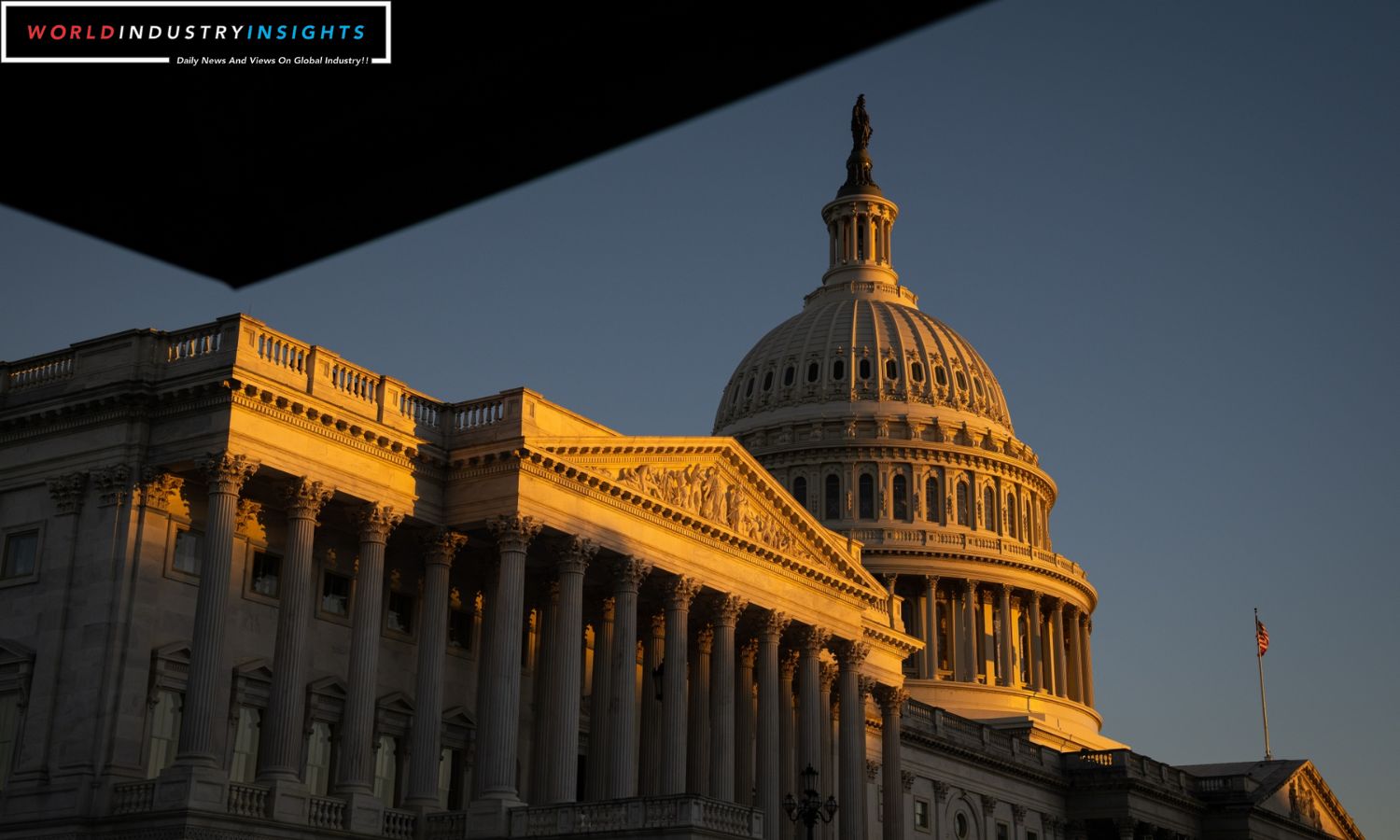US Government Faces Soaring Budget: In a fiscal year fraught with economic uncertainties, the U.S. government has reported a staggering budget deficit of $1.695 trillion for fiscal 2023. This marks a substantial 23% surge from the previous year. The deficit, a result of plummeting revenues and escalating expenses for Social Security, Medicare, and skyrocketing interest costs on the national debt, stands as the largest since the pandemic-fueled $2.78 trillion chasm in 2021.
It’s a stark reversal of fortune after back-to-back years of diminishing deficits during President Joe Biden’s initial two years in office. The deficit’s resurgence coincides with President Biden’s call for $100 billion in new foreign aid and security spending. This request includes $60 billion for Ukraine, $14 billion for Israel, as well as allocations for U.S. border security and the Indo-Pacific region.
Notably, this towering deficit has eclipsed even the deficits recorded before the COVID-19 pandemic, including those resulting from the Republican tax cuts passed under the Donald Trump administration and the financial crisis years. This development is likely to ignite fiscal clashes between President Biden and House Republicans, who have been pushing for spending cuts.
These conflicts brought the U.S. perilously close to default in early June over the debt ceiling issue, resulting in a deal that led to the removal of House Speaker Kevin McCarthy and a fragmented Republican party. This division is expected to complicate negotiations in the run-up to a new fiscal deadline in mid-November.
Also Read: Crude Weekly Plunge: Sharpest Decline Since March in the Fast Lane
For September, the final month of the fiscal year, the deficit did see a drop to $171 billion from $430 billion in September 2022. A notable contributor to the 2023 deficit is the decline in revenues, emphasizing the significance of President Biden’s enacted and proposed policies to reform the tax system, according to statements from Treasury Secretary Janet Yellen and Office of Management and Budget Director Shalanda Young.
It’s worth noting that the fiscal 2023 deficit could have been a considerable $321 billion larger if it weren’t for the Supreme Court’s decision to strike down President Biden’s student loan forgiveness program. This ruling forced the Treasury to reverse a preemptive charge against fiscal 2022 budget results, increasing that year’s deficit.
To put things in perspective, the fiscal year 2022 deficit stood at $1.375 trillion. Factoring in these adjustments, the previous fiscal year would have witnessed a deficit closer to $1 trillion, while this year’s deficit would have been near $2 trillion, as per a Treasury official.
The 2023 deficit concludes two years of declining deficits under President Biden, as pandemic-related spending waned. Nevertheless, the Congressional Budget Office has sounded an alarm, warning that if current tax and spending legislation remains unchanged, deficits will approach COVID-era levels by the end of the decade, possibly reaching a staggering $2.13 trillion in 2030. The increasing burden of interest, healthcare, and pension costs is a major factor in this projection.
In fiscal 2023, total revenues declined by $457 billion, a 9% drop from fiscal 2022, falling to $4.439 trillion. The decrease is primarily attributed to a dip in non-withheld individual income tax payments, owing to a weaker performance in stocks and other financial assets amid rising interest rates. Other revenue declines include a $106 billion decrease in Federal Reserve earnings, as interest payments on bank reserves consumed portfolio income.
Outlays for fiscal 2023 decreased by $137 billion, a 2% decline from the previous year, reaching $6.134 trillion. However, this drop would have been less pronounced if not for substantial increases in spending on retirement and healthcare benefits for the elderly, as well as growing debt service costs. Spending on Social Security rose by 10% to $1.416 trillion due to cost-of-living adjustments for inflation, while Medicare senior healthcare program spending increased by 4% to $1.022 trillion.
Interest costs on the federal debt, which exceeds $33 trillion, experienced a significant uptick, rising by 23% to reach $879 billion, a new record. Net interest payments, excluding intragovernmental transfers to trust funds, surged by 39% to $659 billion, also setting a new record, according to a Treasury official. Gross interest payments represented 3.28% as a share of gross domestic product, the highest since 2001, while the net share at 2.45% reached the highest level since 1998.
Over the past year and a half, interest rates have sharply risen as the Federal Reserve increased borrowing costs to combat inflation. The average interest cost on the Treasury’s outstanding debt was 2.97% last fiscal year, up from 2.07% the year before.
Our Reader’s Queries
What is the budget crisis in 2023?
In 2023, California’s budget presented a paradoxical situation. On one hand, the state had to reduce its expenses due to a staggering $32 billion deficit for the upcoming fiscal year. On the other hand, the final spending plan for the general fund was the second largest ever recorded, totaling $308 billion. Despite the need for austerity measures, California managed to maintain a significant level of spending.
Has the 2024 federal budget passed?
Lawmakers have come to an agreement on spending levels for the upcoming fiscal year 2024 budget, just 12 days before the current deal expires. However, funding negotiations are still ongoing, which could potentially lead to a shutdown.
How much has the deficit increased in 2023?
The government’s spending and revenue gap, also known as the federal budget deficit, has risen from 5.4% of GDP in FY 2022 to 6.3% of GDP in FY 2023. This increase highlights the need for effective financial management and strategic planning to ensure a stable economy.
Has the US increased government spending?
Our federal spending has increased by $152 billion since October 2023, as per the updated monthly data from the Monthly Treasury Statement (MTS) dataset. This is in comparison to the federal spending of $907 billion during the same period last year (Oct 2022 – Nov 2022).



